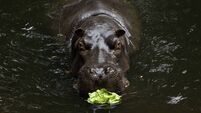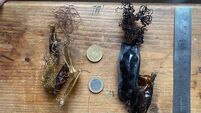Crunching the numbers on pollution monitoring at Timoleague

Pollution monitoring at Timoleague Agricultural Catchments Programme. Pictures: Pádraic Fogarty
Ireland’s water quality crisis is mostly driven by agricultural activity and has become more acute in the years since the lifting of dairy quotas. As a result, the European Commission recently decided that Ireland’s derogation from the Nitrates Directive, which had allowed for the spreading of up to 250kg of animal manure nitrate per hectare, is to be reduced to 220kg/ha.
This is set to cause significant pain to the 2,000 or so farmers who will be forced to either reduce their cow numbers or find extra land to spread the same quantity of manure. Farm organisations and their political supporters have cried foul, variously questioning the scientific data from the Environmental Protection Agency or claiming that the proposed reduction will have no effect on water quality and so is pointless. Since the summer they have pointed to results coming from a small river catchment around Timoleague in West Cork, with high levels of intensive dairy farming, and where water quality has shown an improvement since 2019.







